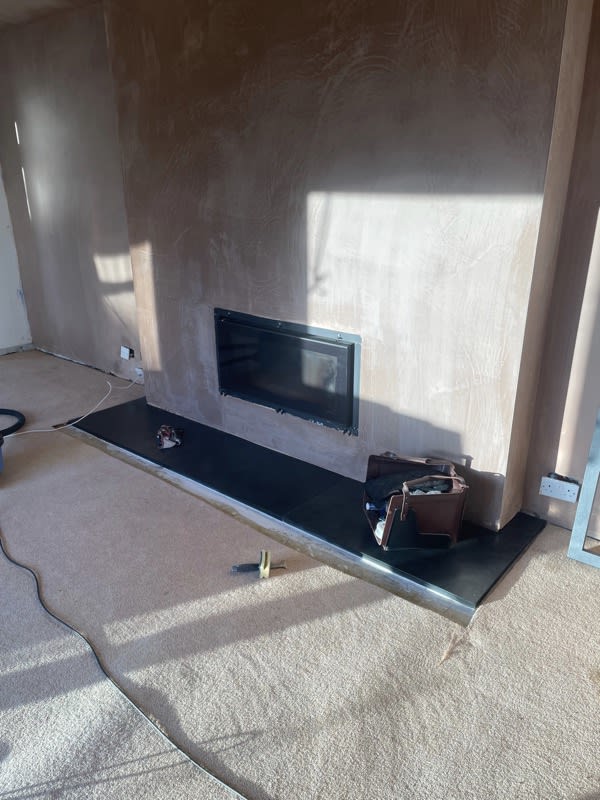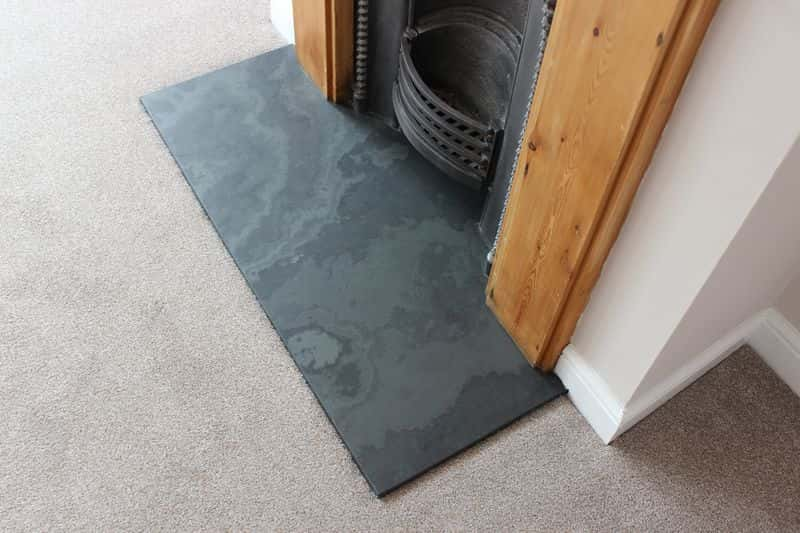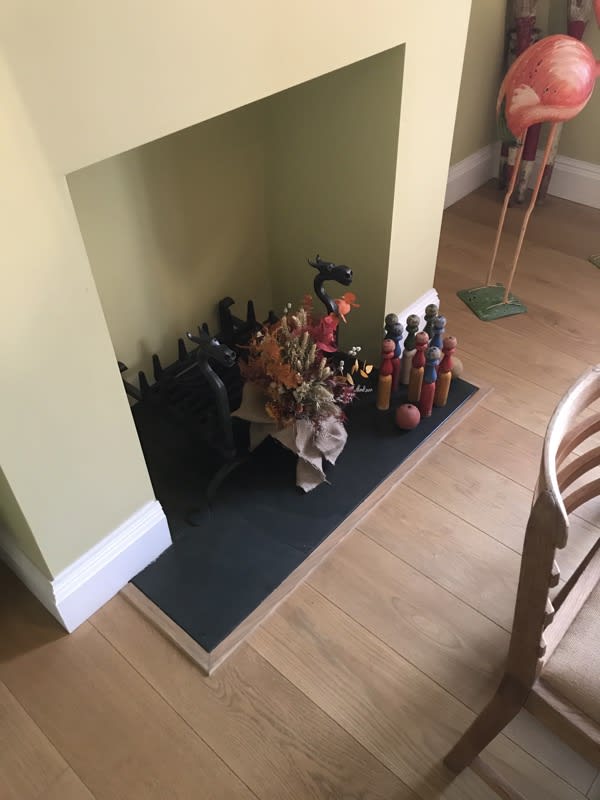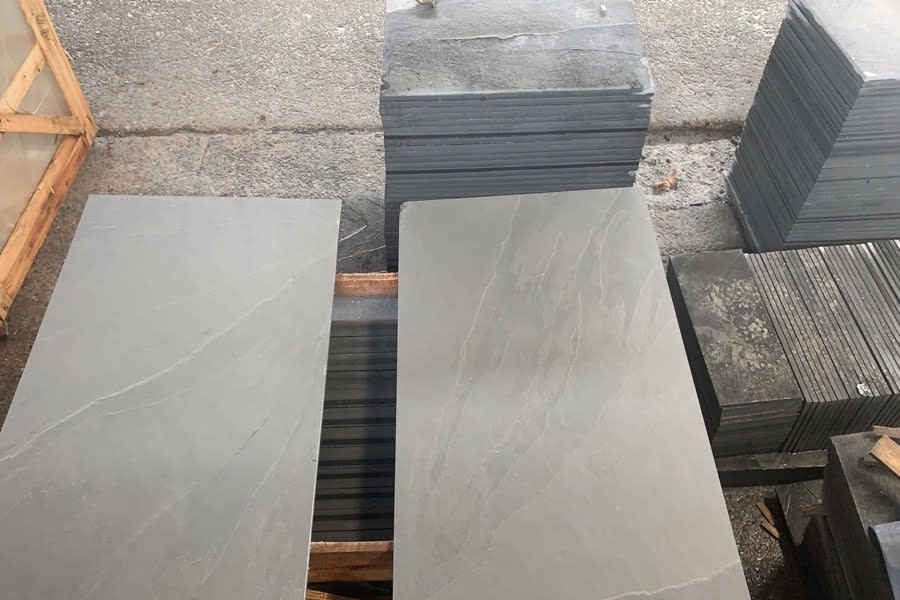A fireplace hearth is a flat surface in front of or under your fireplace. It is made from non-combustible materials like stone, brick, or tile. This area serves as a safety feature, preventing sparks or coals from causing damage to your flooring. It also acts as a base for your fireplace tools and adds a finished look to your fireplace.
Hearths usually extend beyond the fireplace opening into the room. This design helps catch any ashes that might fall out, keeping your living space cleaner and safer. Depending on the type of fireplace you have, the hearth may sit flush with the floor, be raised slightly, or even form part of a larger fireplace structure.
In addition to its safety role, the hearth is often a decorative element. It can complement your home’s style and make your fireplace a central feature in the room. Whether you use your fireplace daily or only occasionally, the hearth plays a key role in functionality and appearance.
Now, let’s get to the nuances of choosing a hearth material.
Fireplace hearth safety requirements
When choosing or installing a fireplace hearth, safety is a top priority. A properly designed hearth not only protects your home but also keeps everyone safe around the fireplace. However, the first requirement that you should consider is the size. The size of your hearth depends on the size of your fireplace. Below you can see the standard rules:
- If your fireplace opening is less than 6 square feet, the hearth must extend at least 16 inches in front of the fireplace and 8 inches on each side.
- For fireplaces larger than 6 square feet, the hearth needs to extend at least 20 inches in front and 12 inches on the sides.
These extensions are necessary to catch any falling embers or debris, preventing them from landing on flammable flooring.
Hearth thickness
The thickness of the hearth depends on how much heat your fireplace produces:
- If the fireplace generates temperatures below 100°C, a minimum 12mm thick hearth is sufficient.
- For fireplaces that get hotter than 100°C:
- If the fireplace sits on a combustible floor (like wood), the hearth must be at least 250mm thick.
- If it’s on a non-combustible floor (like concrete), the combined thickness of the floor and hearth should also be at least 250mm.
Clearances from combustible materials
Make sure the hearth and the area around the fireplace meet local fire codes. These rules ensure there’s enough distance between the fire and any flammable materials like carpets, curtains, or wooden furniture.
What are the best and worst hearth materials for the fireplace
Some materials have high durability and great heat resistance, making them ideal for certain types of fireplaces. Others may not perform well under high temperatures or regular use. Here’s a clear breakdown of the best and worst options.
Best Materials for Fireplace Hearths
- Granite – one of the toughest materials available. It resists scratches, stains, and heat, making it perfect for wood-burning fireplaces that produce high temperatures. It works well for homes with heavy fireplace use, especially wood burners. But keep in mind that granite hearths can be expensive and requires professional installation due to its weight and hardness.
- Slate – durable, heat-resistant, and has a natural beauty with unique patterns and colours. It retains heat well, adding warmth to the room even after the fire is out. The slate hearths are suitable for both wood-burning and decorative fireplaces. They are a premium material, which can make it more expensive than other options.
- Soapstone – has excellent heat resistance and doesn’t crack easily under high temperatures. It’s also a durable choice for wood-burning fireplaces. Ideal for heavy-use fireplaces where heat resistance is a priority. Soapstone is pricier and has limited colour options, usually in light greys.
- Concrete – affordable, durable, and highly customisable. It can handle heat well and offers a modern, minimalist look. Suitable for wood-burning and gas fireplaces. However, it may require sealing to prevent stains over time.
Materials to Avoid
- Limestone – prone to cracking when exposed to high temperatures. It’s better suited for electric or gas fireplaces, which produce less heat. For wood-burning fireplaces, it is a big “NO”.
- Wood – combustible material, which makes it unsuitable for use as a hearth. It poses a significant fire risk if used near open flames. It is the worst option for any type of fireplace.
Verdict
When selecting a hearth material, think about how often you’ll use your fireplace, the type of fireplace you have, and your home’s overall style. Durable options like granite or soapstone are best for frequent use, while concrete and slate offer a mix of durability and design flexibility.
Recommended Use by Fireplace Type
| Material | Wood-Burning | Gas | Electric |
| Granite | Excellent | Excellent | Suitable |
| Slate | Excellent | Excellent | Suitable |
| Soapstone | Excellent | Good | Suitable |
| Concrete | Good | Excellent | Excellent |
| Limestone | Unsuitable | Good | Excellent |
If you’re still unsure about the best choice, a professional installer or designer can help. They’ll ensure your hearth meets all safety regulations and complements your fireplace. But if you are interested in picking the slate material then we have a great selection of Brazilian slate hearths:





